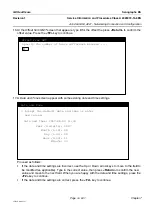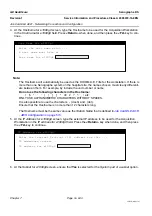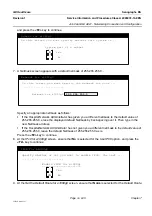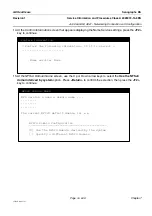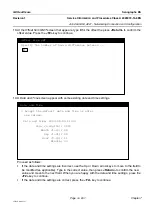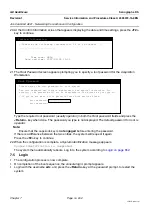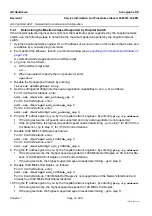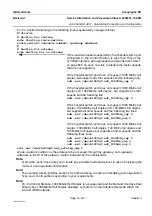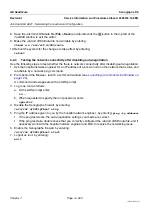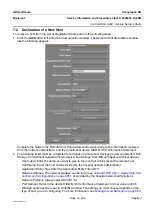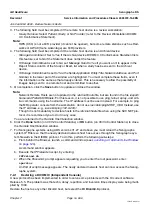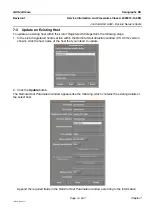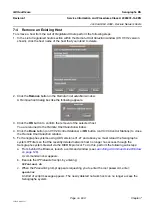
GE Healthcare
Senographe DS
Revision 1
Service Information and Procedures Class A 2385072-16-8EN
Job Card ELE A021 - Networking Connection and Configuration
Page no. 655
Chapter 7
JC-ELE-A-021.fm
9-2
Disabling Auto Negotiation and Reducing the Speed of the Network Inter-
face
By default, the Control Station is delivered with auto-negotiation enabled on the network interface
eri0/nge0/e1000g0. Not all hospital switches (or their ports) support auto-negotiation. In the case that the
hospital switch does not support auto-negotiation, you must disable the network interface eri0/nge0/
e1000g0 auto-negotiation capabilities via a command that includes
adv_autoneg_cap 0
(see procedures
below).
Once auto-negotiation is disabled, the network interface eri0/nge0/e1000g0 operates at its fasted possi-
ble speed unless you have disabled that speed
before
disabling the network interface auto-negotiation
capabilities. If the operating speed of the network interface eri0/nge0/e1000g0 remains greater than that
of the hospital switch port which is connected to Control Station, communication with the hospital net-
work may not be possible.
Table 1 summarizes the different network interface speeds, their probability that they work with the hos-
pital switch, and the command used to disable the appropriate speed. If you are disabling auto-negotia-
tion, you must consult the hospital network administrator to determine the maximum speed supported by
the hospital switch port connected to the Control Station. Any speeds that are not supported by the hos-
pital switch port must be disabled on the network interface eri0/nge0/e1000g0
before
disabling the auto-
negotiation capabilities.
TABLE 1 - POSSIBLE NETWORK INTERFACE SPEEDS
Network interface
speed
Probability it
works with
hospital switch
ndd command used to disable network interface speed
(via command line or S93route file)
1000 Mbit/s Full Duplex
Maybe
V1/V2: Not applicable, since 1000 Mbit/s not possible
V3:
ndd -set /dev/nge0 adv_1000fdx_cap 0
V4:
ndd -set /dev/e1000g0 adv_1000fdx_cap 0
1000 Mbit/s Half Duplex
Maybe
V1/V2: Not applicable, since 1000 Mbit/s not possible
V3:
ndd -set /dev/nge0 adv_1000hdx_cap 0
V4: Not Applicable - Mode does not exist
100 Mbit/s Full Duplex
Probably
V1/V2:
ndd -set /dev/eri adv_100fdx_cap 0
V3:
ndd -set /dev/nge0 adv_100fdx_cap 0
V4:
ndd -set /dev/e1000g0 adv_100fdx_cap 0
100 Mbit/s Half Duplex
Probably
V1/V2:
ndd -set /dev/eri adv_100hdx_cap 0
V3:
ndd -set /dev/nge0 adv_100hdx_cap 0
V4:
ndd -set /dev/e1000g0 adv_100hdx_cap 0
10 Mbit/s Full Duplex
Usually
V1/V2:
ndd -set /dev/eri adv_10fdx_cap 0
V3:
ndd -set /dev/nge0 adv_10fdx_cap 0
V4:
ndd -set /dev/e1000g0 adv_10fdx_cap 0
10 Mbit/s Half Duplex
Definitely
V1/V2:
ndd -set /dev/eri adv_10hdx_cap 0
V3:
ndd -set /dev/nge0 adv_10hdx_cap 0
V4:
ndd -set /dev/e1000g0 adv_10hdx_cap 0

